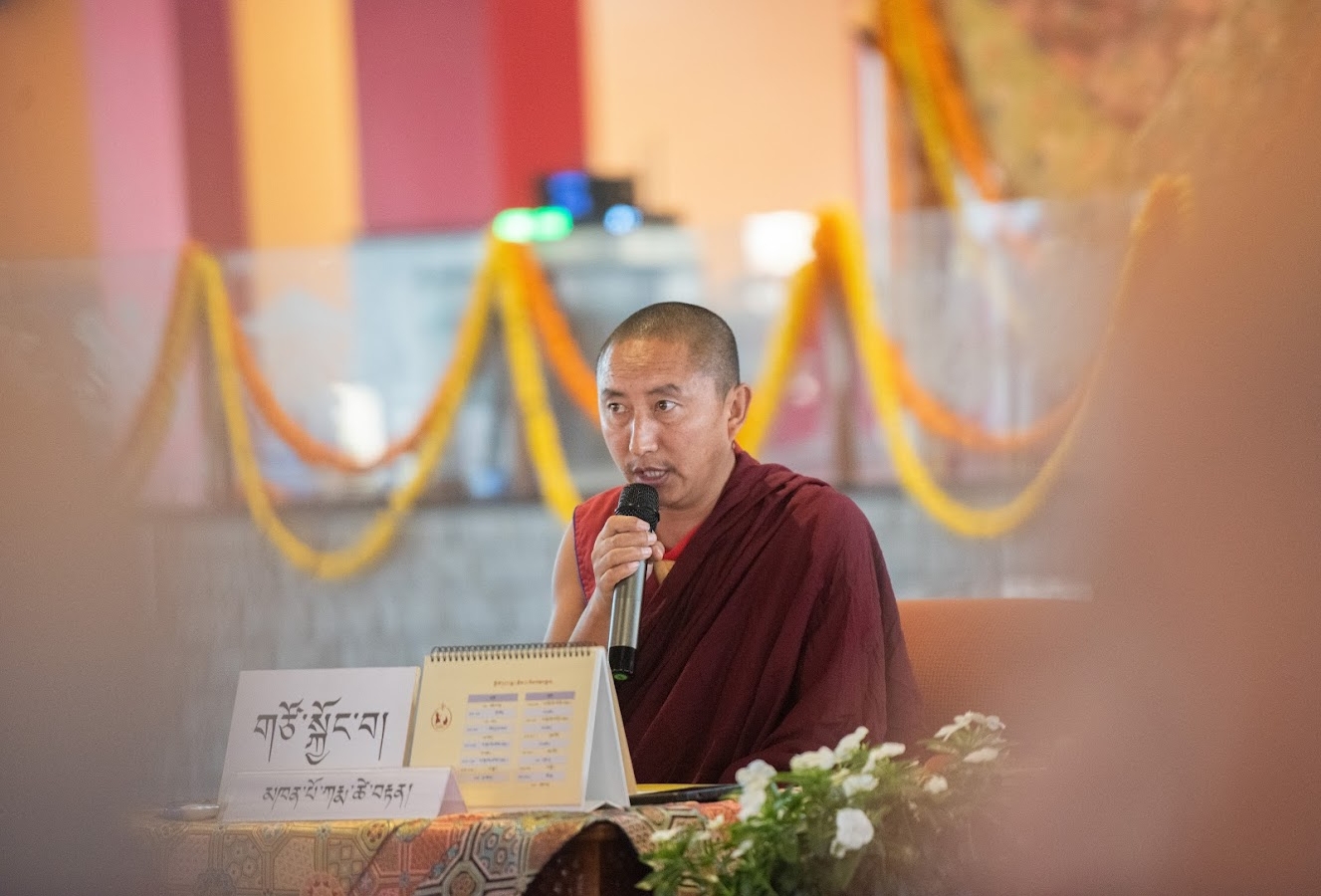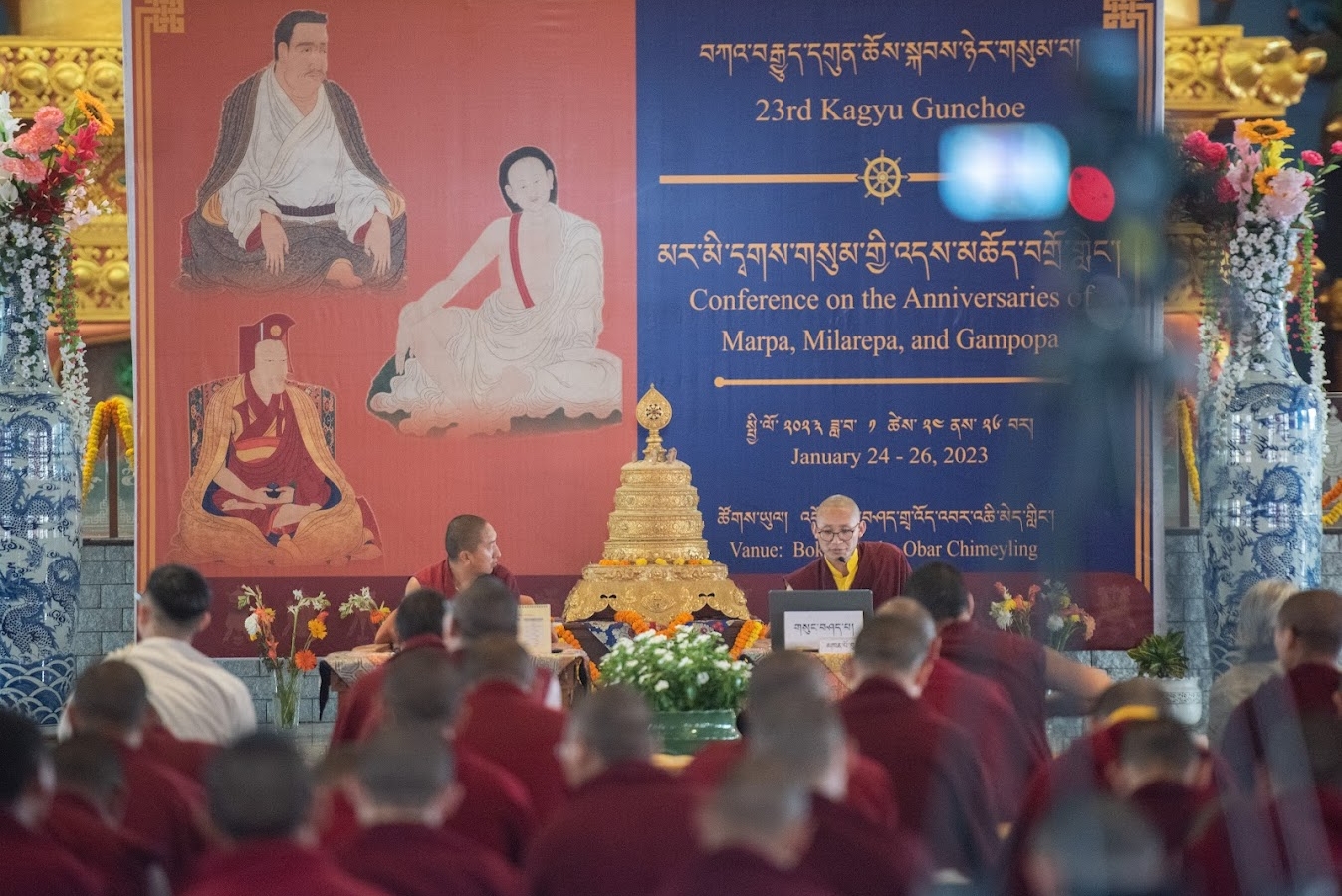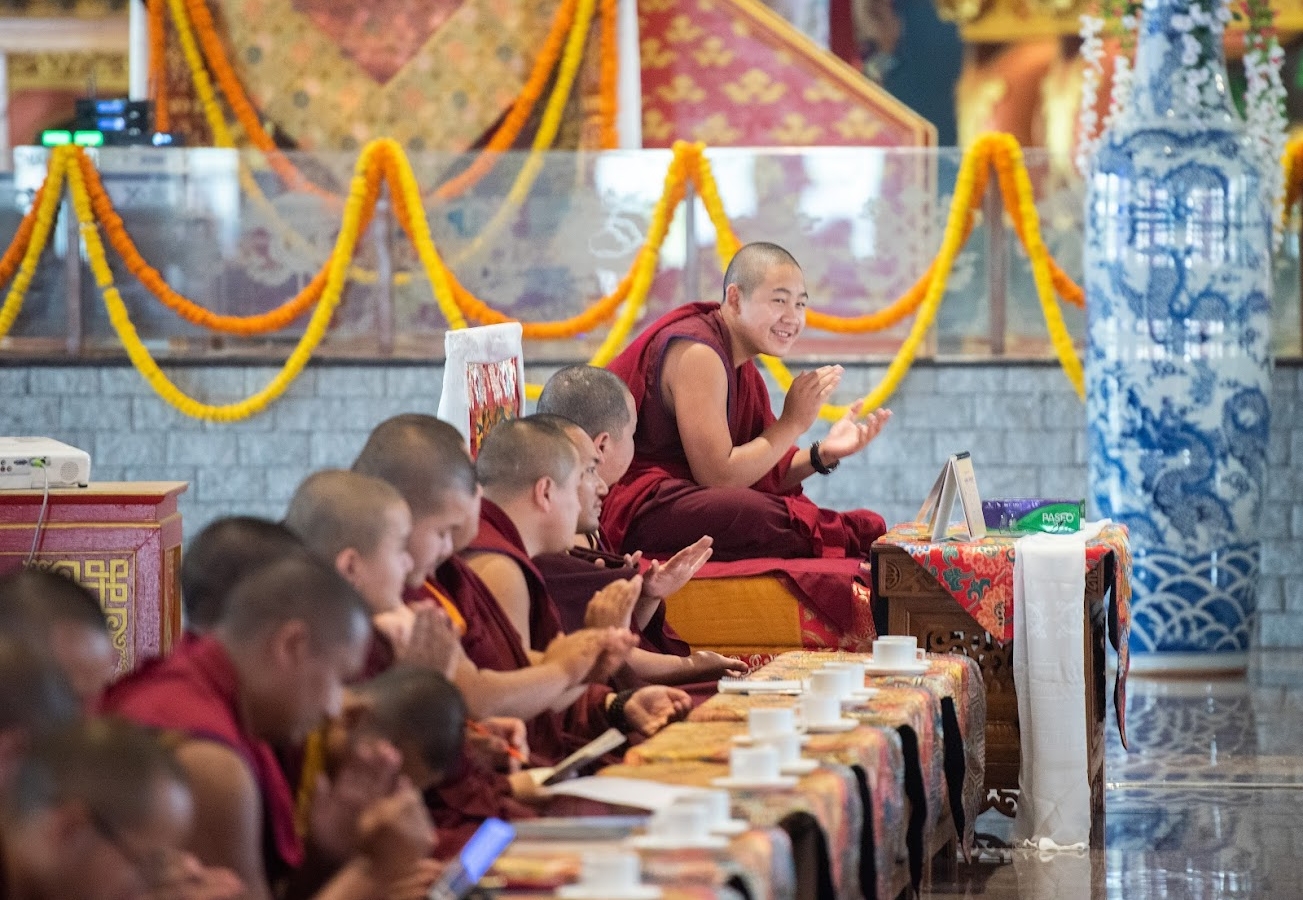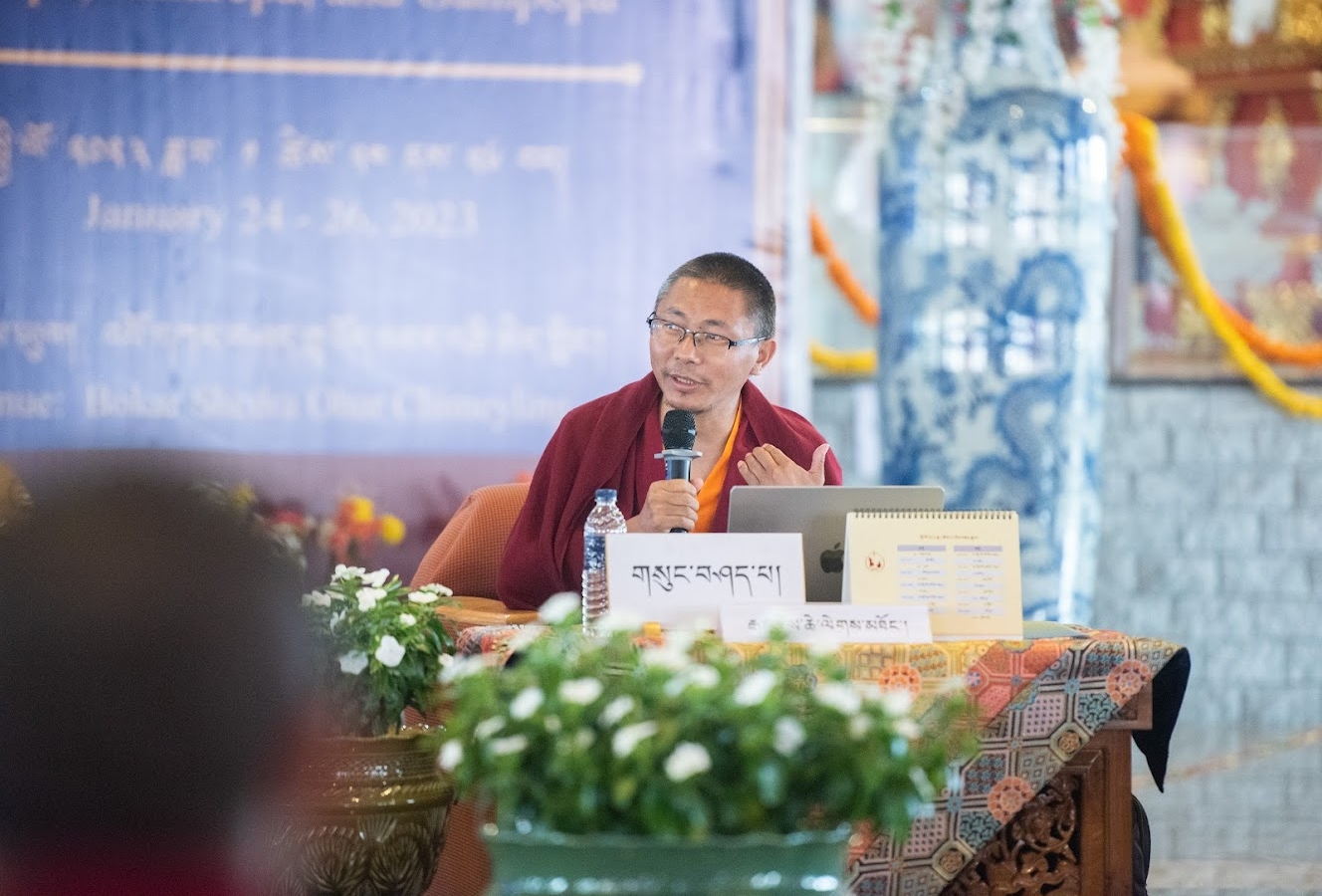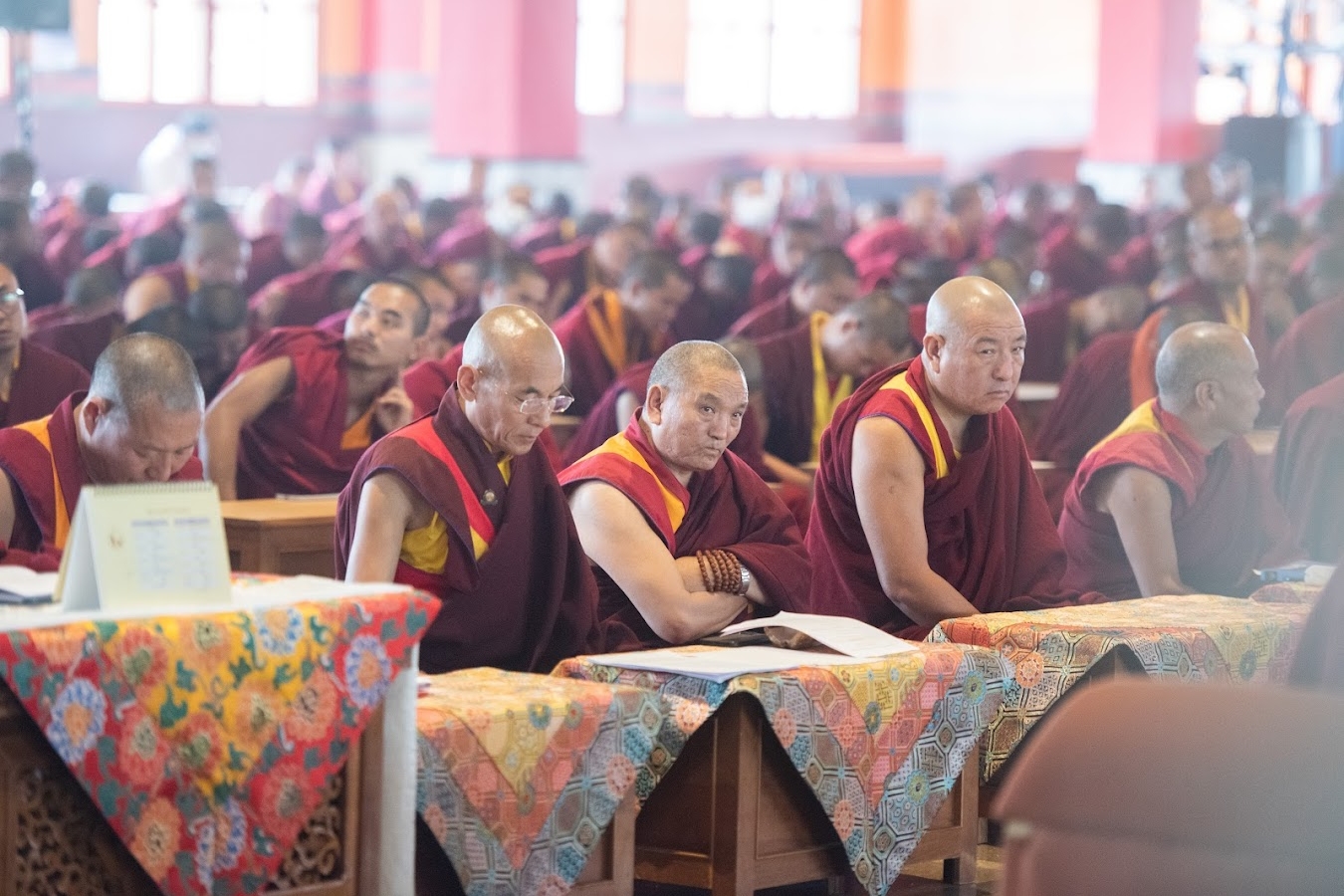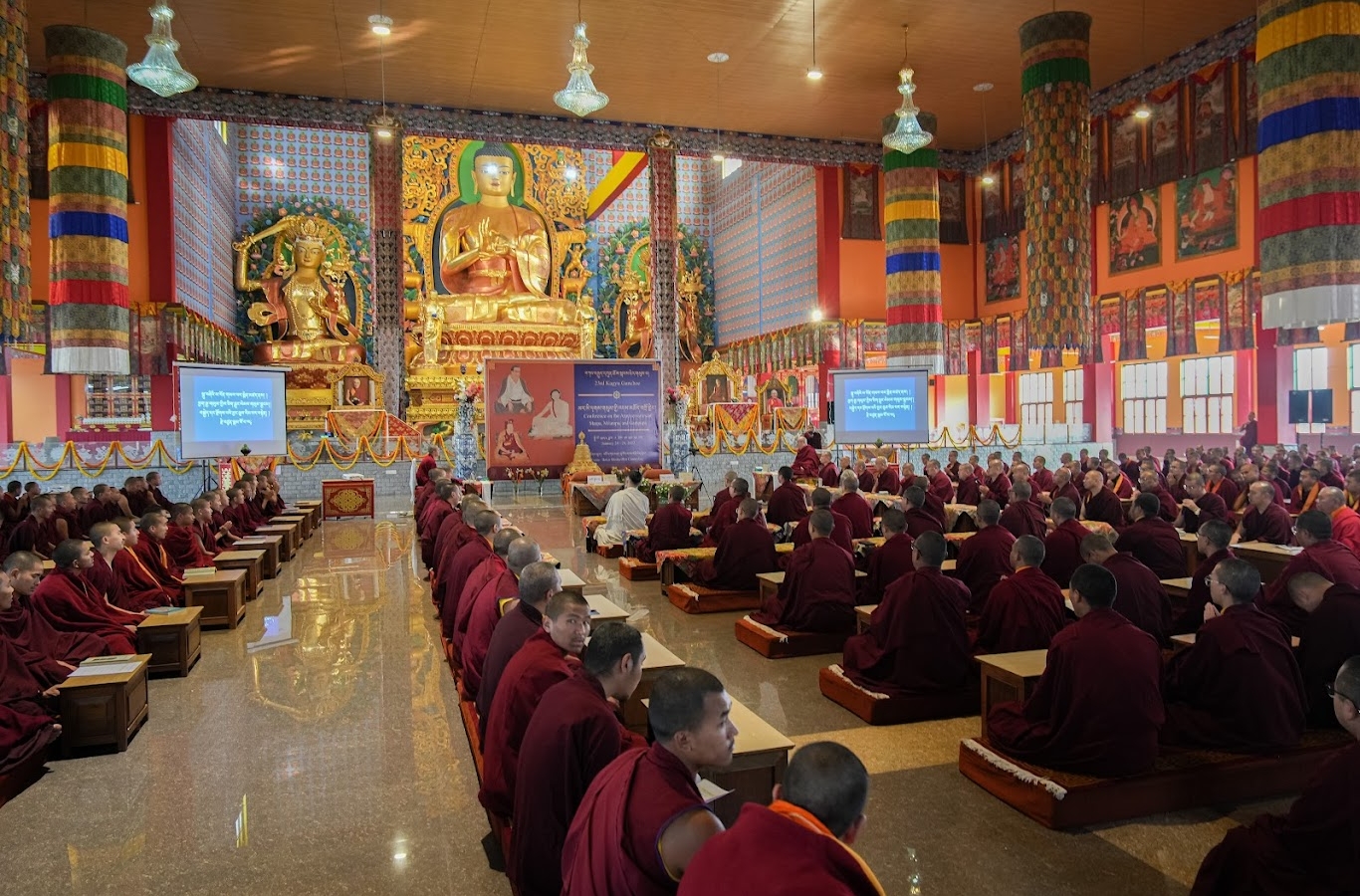24 – 26 January, 2023
Each year at the Kagyu Gunchoe there is a three-day conference. This year the topic was establishing correctly the anniversaries of the Kagyu forefathers Marpa, Milarepa and Gampopa.
A mix of monks and scholars joined together to discuss this. Kyabje Bokar Rinpoche Yangsi and Khenchen Lodroe Donyo Rinpoche were present, along with khenpos and students from the Kagyu shedras, two lay scholars—the Tibetan historian Prof. Tashi Tsering, and Gen Karma Lodoe Rinchen—and representatives of Tsurphu Labrang which is sponsoring the Gunchoe.
The different aspects of the topic were addressed by various speakers: dates, biographical materials for determining the dates and the contributions that each of the forefathers made, followed by open discussions.
The Gyalwang Karmapa joined the conference by ZOOM on the 24th as well as the 26th January. On the first day, he spoke prelusively of his hopes for the conference: should the standardisation of dates and anniversaries prove unfeasible in its entirety during the very first conference, the aim was to at least have a comprehensive introduction to the project.
He said that to prove someone existed as an actual historical figure we need to be able to show the time when they lived so it’s important for us to do this for the forefathers of the Kagyu lineage. Another benefit of this work is having standardised dates for everyone to celebrate the anniversaries at the same time.
One of the problems in the Indian histories is the difficulty of pointing to any time frame less broad than a century for any historical figure. We don’t even really know the time of the Buddha’s passing. Therefore, this is a project which is going to take some time as it requires much more research in the future, also owing to the fact that the scholars presenting had but a month to prepare.
After expressing his hopes and the relevance of having such discussions, he also cautioned against feelings of attachment to our own tradition, our own ideas and school. He advised everyone to look at it impartially.
His Holiness then brought up the issue of the various difficulties when calculating dates in Tibet, in part due to the different calendar systems denoting different times. He suggested that the accounts having different dates may well be ascribable to the implementation of different calendars.
He also suggested that, at the time in question, they must have used the Chinese calendar which was brought to Tibet by either one of the two empresses, Songtsen Gampo’s or Trisong Deutsen’s wife. During one of those two periods, the tradition of using Chinese astrology was brought in.
So, if we look at the names of the months and the names of the years, they all rely upon the Chinese system. Though that could be a starting point, it is possible that some changes have been made in Tibet. In any case, the important thing is to establish what system they were using at the time. Unless we know that, determining the dates is hard.
At the conclusion, on the 3rd day of the conference, 26th January, he opened with words of thanks to Prof. Tashi Tsering, describing him as a leading scholar among Tibetans in exile. And, he added, if he were in Tibet he would have been the leading scholar of the country. In fact, he would probably be more celebrated in Tibet than he is in exile. His scholarly contribution was of great help to His Holiness as they shared books, helped each other find manuscripts and so forth. He also thanked the other presenters who had worked very hard and found much useful material that would be helpful in the pursuit of further research. He expressed his hope of continuing this work in the future in a larger conference and, what is more, inviting some scholars from other lineages in order to make it into an undertaking of the entire Kagyu tradition. He didn’t see this as the finish line but rather as a starting point for instituting the dates and anniversaries.
He spoke about the different calendar traditions. In Tibetan astrology there is some influence from India and some from China and he expounded on the correlation as well as differences between Chinese and Indian philosophy. He discussed the supporting documents, by Tang Xuan Zang and Amoghavajra, and the Chinese calendar traditions, going back to the origin before the common era and its establishment during the Tang Dynasty.
The Karmapa then mentioned the issue of differences in calendar system. In many old sources, the months are named by the astrological signs of the Chinese zodiac, for example, and it is necessary to calculate how the months correlate in different calendars to establish dates. Further, the tradition of calling the months as the first, second, and so forth (hor da or Mongolian month) is a Chinese tradition which likely came later, sometime in the 13th century, during the time of Drogon Chogyal Phakpa who went to the Mongolian court and was a lama to Kublai Khan before Karma Pakshi went there. So it’s during his time (and this likely needs more research) that we started seeing months designated by a number.
There are also traditional ways of calculating months by observing the relative positions of the moon and the constellations during the lunar cycle. It is possible that the dates given in the various biographies of the three forefathers may have used this system, and this issue must be taken into consideration.
In essence, His Holiness spoke at length about different calendar systems and most importantly, the necessity to determine which calendar system was in fact used at the time of Marpa, Milarepa and Gampopa in order to accurately institute the dates and anniversaries.
With this, the annual Gunchoe conference came to a close.


